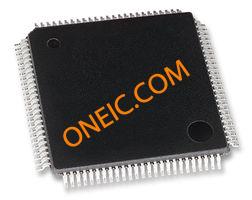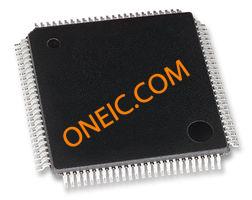LM3S2965-IQC50
32-bit ARM Cortex M3 microcontrollers with 256KB flash memory
Manufacturer: ['ti', 'luminary']
series introduction
# Introduction to the LM3S2965 - IQC50 Product Series
## 1. Overview
The LM3S2965 - IQC50 is a remarkable product series within the realm of microcontrollers, developed to meet the diverse and demanding requirements of modern embedded systems. These microcontrollers are engineered with a focus on high - performance, low - power consumption, and rich functionality, making them suitable for a wide range of applications across multiple industries.
## 2. Key Features
### 2.1 Processor Core
- **ARM Cortex - M3 Architecture**: At the heart of the LM3S2965 - IQC50 series lies the ARM Cortex - M3 processor core. This core offers a high - performance 32 - bit RISC architecture with a Harvard architecture design, which allows for simultaneous access to instructions and data. It has a fast interrupt handling mechanism, enabling the microcontroller to respond quickly to external events. The Cortex - M3 core also supports the Thumb - 2 instruction set, which provides a good balance between code density and performance.
- **High Clock Speed**: The microcontroller operates at a relatively high clock speed, which can be configured according to the application's needs. This high clock speed enables the execution of complex algorithms and tasks in a short period, enhancing the overall system performance.
### 2.2 Memory
- **Flash Memory**: The LM3S2965 - IQC50 is equipped with a significant amount of on - chip flash memory. This non - volatile memory is used to store the program code of the application. The large flash memory capacity allows for the development of complex and feature - rich applications without the need for external memory expansion in many cases.
- **SRAM**: Alongside the flash memory, the microcontroller has a sufficient amount of on - chip static random - access memory (SRAM). SRAM is used for storing data during the execution of the program, such as variables, buffers, and stack space. The availability of SRAM ensures smooth and efficient data processing.
### 2.3 Peripherals
- **GPIO (General - Purpose Input/Output) Pins**: The series offers a generous number of GPIO pins. These pins can be easily configured as either input or output pins, allowing for seamless interfacing with external devices such as sensors, actuators, and displays. The GPIO pins can also be used for bit - banging communication protocols or for simple control tasks.
- **UART (Universal Asynchronous Receiver/Transmitter)**: Multiple UART interfaces are provided, which are commonly used for serial communication. UARTs are ideal for communicating with other devices such as computers, sensors, and modems. They support a wide range of baud rates, making them flexible for different communication requirements.
- **SPI (Serial Peripheral Interface)**: The SPI interface enables high - speed serial communication between the microcontroller and other SPI - compatible devices. It is often used for communicating with external memory chips, sensors, and displays. The SPI interface supports full - duplex communication, allowing for simultaneous data transfer in both directions.
- **I2C (Inter - Integrated Circuit)**: The I2C interface is a popular serial communication protocol used for connecting multiple devices on a single bus. It is commonly used for communicating with sensors, EEPROMs, and other low - speed devices. The I2C interface in the LM3S2965 - IQC50 series supports multi - master and slave configurations, providing flexibility in system design.
- **PWM (Pulse - Width Modulation) Outputs**: The microcontroller features PWM outputs, which are useful for controlling the speed of motors, the brightness of LEDs, and other applications that require analog - like control using digital signals. The PWM outputs can be configured with different frequencies
Images for reference

100-LQFP

Image Preview

Image Preview